- Home
- Deborah Harkness
The All Souls Real-Time Reading Companion Page 2
The All Souls Real-Time Reading Companion Read online
Page 2
When thinking of Godfrey de Clermont’s copy of the Aurora Consurgens, I imagined the main images would resemble those in Harley 3469 though the surrounds would be much earlier in style (as befits a work of Bourgot Le Noir, who was active in the middle of the fourteenth century).
10 October, Chapter 26:
I needed no encouragement to be with you. You say you’ve loved me since you resisted hitting me with an oar on the river.’ His eyes were unguarded. ‘I’ve loved you longer than that – since the moment you used magic to take a book from its shelf in the Bodleian.’
‘Moon Song’ by David Berkeley: I listened to a lot of David Berkeley writing A Discovery of Witches, because Berkeley captures the bittersweet nature of love and longing so perfectly.
http://www.youtube.com/watch?v=J1RXTcEwt5k
11 October, Chapter 27:
Matthew met my eyes with difficulty. They were full of pain and a vulnerability that he’d carefully hidden before now. It broke my heart.
‘I can’t risk it Diana,’ he said. ‘I want you – more than anyone I’ve ever known.’
‘Iris’ by The Goo Goo Dolls – a song all about letting yourself be vulnerable with the one you truly love.
http://www.youtube.com/watch?v=NdYWuo9OFAw
12 October, Chapter 29:
We descended toward something that looked like a crater set apart from the surrounding countryside by yawning ravines and overgrown forests. It proved to be the ruin of a medieval castle, with high walls and thick foundations that extended deep into the earth.
Image of Château de Murol in the Auvergne, my inspiration for La Pierre.
13 October, Chapter 32:
We turned down the rutted road leading to the Bishop House. Its late-eighteenth-century lines were boxy and generous, and it sat back from the road on a little knoll, surrounded by aged apple trees and lilac bushes.
My inspiration for the Bishop House was actually a house one of my grandfathers built in Western Massachusetts around 1750. Many settlers to upstate New York came from Western Massachusetts, and they built farm houses that looked like those they grew up in.
14 October, Chapter 34:
A thick brown envelope wormed its way through a crack in the green-painted panelling next to the fireplace. Once it had worked itself free, it shot across the keeping room and landed, faceup, in my lap.
Colonial houses had separate rooms for meeting guests, dining, cooking, and sitting as a family. The most formal of these rooms was usually the parlor, and the family’s room was often called the keeping room. In the Bishop House, I put an extension on the back of the original house. Sarah’s office is the old parlor. The keeping room – though once the more ‘casual room’ – is now used as the formal living room in the house.
15-19 October, Chapter 37:
There was an anomaly in the forest, felt rather than seen. It was a bending of the fading light, a sense of momentum, an aura of dark intention. My head swivelled over my shoulder.
‘Someone’s here,’ I said.
‘The Gloaming’ by Radiohead sets the perfect atmosphere for Diana’s realization that she and Matthew were in danger.
https://www.youtube.com/watch?v=xW4uZdJgsLQ.
15-19 October, Chapter 37:
‘I am Juliette Durand.’
‘Gold Dust Woman’ by The Spill Canvas was always ‘Juliette’s Song’ in my mind. Enjoy this cover of a Fleetwood Mac classic.
http://www.youtube.com/watch?v=KiW2gNgLNgM
20-21 October, Chapter 38:
I traveled countless miles that night, fleeing from place to place, never more than a step ahead of whoever was pursuing me – Gerbert, Satu, Juliette, Peter Knox. Whenever my journey brought me back to the Bishop House, Matthew was there.
‘Duet’ by Rachael Yamagata ft. Ray Lamontagne: this song perfectly captured Matthew’s mood while he watched Diana fight to survive – and her efforts to come back to him.
http://youtube.com/watch?v=2EO0w9i5wmA
22-28 October, Chapter 39:
Above me the branches of the tree were cracked and withered. Bare limbs forked and forked again into shapes reminiscent of a stag’s horns.
Ancient ‘stag-headed’ oak.
29 October, Chapter 40:
The two young men had stormed out of the room when we broke up to go our separate ways, mumbling something about getting milk. They’d then climbed into Marcus’s car and torn down the driveway.
One of Marcus’s sports cars (his was navy), and the one he drove to Madison: a Ferrari 250 GT SWB California Spyder. You can see why Matthew told Nathaniel ‘no speeding’.
30-31 October, Chapter 41:
‘In this room we understand why such a war might be fought. It’s about Diana and the appalling lengths the Congregation will go to in an effort to understand the power she’s inherited. It’s about the discovery of Ashmole 782 and our fear that the book’s secrets might be lost forever if it falls into the witches’ hands.’
‘The Pearl’ by Emmylou Harris: this is the song that I heard for the conventicle’s call to battle. Even now I can’t listen to it without thinking of the group gathered at the Bishop House before Diana and Matthew timewalked.
https://www.youtube.com/watch?v=Fd8nTY46oTQ
31 October, Chapter 42:
The bag held a ring made of three separate gold bands twisted together. The two outer bands were fashioned into ornate sleeves, colored with enamel and studded with small jewels to resemble embroidery. A golden hand curved out of each sleeve, perfectly executed down to the tiny bones, slender tendons, and minute fingernails.
Many, many readers have asked me about Ysabeau’s ring. Some can’t imagine what it looks like. Others wonder if it is real, or imaginary.
In general I don’t make things up unless I have to. As a historian, I spend as much time as I can in libraries, archives, museums and historical places. I love including real historical people, books, places and all sorts of real items into the books. One of them was this stunning ring from the Victoria and Albert museum in London: http://collections.vam.ac.uk/item/O72588/ring-unknown/.
As you can see in the piece beautifully recreated by Janet Cadsawan below, it resembles the ring Matthew gives to Diana quite closely. And when you finish the trilogy, you might also notice how aspects of it are linked to themes in the books: the three bands that become one, the inscriptions ‘my whole heart for my whole life’, ‘my beginning and my end’ and ‘remember the past, and that there is a future’.
Ysabeau’s Scribble Ring by Janet Cadsawan, based on a German Gimmel ring in London’s Victoria and Albert Museum. To see more jewellery inspired by the All Souls trilogy, visit shop.cadsawan.com.
1 November, Chapter 43:
A slip of paper stuck out of the top. It led her to the dedication page. ‘To my deare and most worthy friend Matthew Roydon.’
The dedication page from George Chapman’s The Shadow of Night (1594).
*For all the songs referenced in the notes, please support these amazing artists who have inspired me throughout the All Souls trilogy and purchase their music through legal channels.
Black is the badge of true love lost. The hue of daemons, and the
Real-time Reading Calendar
Note from Deborah
Here we go again! We’re timewalking to 1590 with Diana and Matthew and below is the chapter-by-chapter calendar. As you can see, the timing is far more spaced out than in A Discovery of Witches, switching between the Gregorian and Julian calendars, and there is a month off in February while Matthew and Diana make their long journey to Prague, resuming in March and on through to July.
Please note: some days don’t have chapters because they aren’t covered in the book.
The Julian/Gregorian Calendars Explained
When people went to bed on 4 October 1582, a time-rift opened up in Western Europe. In most places, people woke up and it was 5 October. But in the Polish-Lithuanian region, Portugal, Spain, and most o
f Italy, the next day was officially 15 October. Timewalkers were not to blame. Instead, the loss of ten days was the result of Pope Gregory XIII’s new calendar.
Why did Europe need a new calendar? Because the old Roman calendar put in place by Julius Caesar (the Julian calendar) instituted a calculation error that meant it gradually drifted away from key astronomical markers of the season, like solstices and equinoxes. By the sixteenth century the spring equinox fell on 11 March according to the calendar – not 21 March – thereby affecting the calculation of important ‘movable’ Christian celebrations like Easter.
When I decided that Diana and Matthew were going to travel back to 1590 in Shadow of Night, it soon became clear that the existence of this ‘new style’ Gregorian calendar was going to throw a monkey wrench in the plot. For while most of Catholic Europe had adopted the pope’s new calendar by 1590 (including France and Bohemia), Protestant Europe (including England and Germany) stuck to the ‘old style’ Julian calendar. For Shadow of Night, it meant France and Prague were ten days ahead of England.
It can lead to some confusion about dates. When did the Spanish Armada start, for instance? According to the Spanish, who used the ‘new style’ calendar, it began when their fleet set sail on 20 May 1588. According to the English, who used the ‘old style’, it began on 10 May 1588. Same day, different calendar. Because Shadow of Night was a work of fiction, I had to find some way to weave the calendar problem into the plot or run the risk of confusing my readers. I decided this historical rift in time added to the ‘timewalking’ element of the story, and let Diana reflect on the discrepancy as further evidence of just how fluid time can be.
Keeping all the dates straight was something of a nightmare (you should see my tea-stained, much-revised working calendar complete with phases of the moon and sunrise/sunset times), but it did mean that Diana and Matthew got to celebrate Christmas twice.
The curious might wonder when England and the British American colonies adopted the new calendar. It was 1752. By then, they had to skip eleven days to bring the date into proper alignment with the astronomical data.
Real-time Reading Companion Notes
1 November, Chapter 1:
‘Looking for something, Kit?’ At Matthew’s words the young man dropped the paper to the table and pivoted, joy lighting his face. I’d seen that face before, on my paperback copy of Christopher Marlowe’s The Jew of Malta.
Christopher Marlowe – ‘Kit’. Playwright, radical, spy . . . and Matthew Roydon’s closest friend. A member of the School of Night, he is a daemon and maker of plays.
2 November, Chapter 3:
As a historian I had spent years reading old handwriting and knew exactly how the letters should look, what words were most common, and the erratic spelling choices that were mine to make in a time when there were few dictionaries and grammatical rules.
An English commonplace book from the early seventeenth century – much like the one Matthew gave Diana – showing someone’s practice handwriting.
4 November, Chapter 4:
The severe lines of his doublet made him look even broader through the shoulders, while the acorns and oak leaves stitched in black around the edges of his white collar accentuated the paleness of his skin.
These images illustrate blackwork embroidery on a man’s shirt of the style (though not the exact design) Matthew would have worn under his black doublet. Blackwork embroidery was a type of embroidery popular throughout the sixteenth century, and involved dark monochromatic stitching on a pale background.
5 November, Chapter 5-6:
‘That’s part of the MALLEUS MALEFICARUM. I did not know that your Latin was good enough to comprehend such a difficult work, Mr Danforth’ Matthew said. It was the most influential witch-hunting manual ever produced, and a title that struck terror into a witch’s heart.
Title page from a 1519 edition of the MALLEUS MALEFICARUM (THE HAMMER OF WITCHES), produced and published in 1486-1487.
7 November, Chapter 7:
Few scholars had reason to poke through the bizarre range of books and objects the Gonçalves had collected over the years. Most researchers were down the street at the Archivo General de Indias, arguing about Columbus.
The Archivo General de Indias, Seville.
8-26 November, Chapter 8:
Raleigh had accompanied us from the Old Lodge to Portsmouth and had piloted the boat that took us to Guernsey.
Sir Walter Raleigh
8-26 November, Chapter 8:
‘Immensi tremor oceani’, Matthew whispered as he contemplated the heaving seas. Staring out across the bleak water, he had all the expression of a carved figurehead.
IMMENSI TREMOR OCEANI (‘the tremor of the immense ocean’) is the motto of a French chivalric order founded in 1496 by King Louis XI, the Order of Saint Michael, the patron saint of Mont Saint-Michel. This is an illustration from the first page of the order’s statutes, showing the heraldic chain associated with membership and some of the order’s original thirty five knights surrounding the king.
8-26 November, Chapter 8:
After braving the exposed sands around Mont Saint-Michel at low tide and traveling inland, de Clermont allies welcomed us into the city of Fougères and lodged us in a comfortably appointed tower on the ramparts overlooking the French countryside.
Chateau de Fougères, France
8-26 November, Chapter 8:
‘This was René’s favorite hunting lodge. It was so full of life when he lived here, with artists and scholars in every room.’
Château de Baugé, the hunting lodge of René of Anjou, France.
24 November, Chapter 8:
We reached the stone walls and timbered houses of Saint-Benoît on schedule, just as Philippe had commanded.
Saint-Benoît-du Sault is a real village in France – and well worth the visit.
26 November, Chapter 8:
When I had first seen Matthew, my instinctive response had been to run. But Matthew – large and brooding as he’d been that September night in the Bodleian Library – hadn’t appeared half so otherworldly. And it wasn’t because Philippe de Clermont was a monster. On the contrary. He was, quite simply, the most breathtaking creature I had ever seen – supernatural, preternatural, demonic, or human.
‘Immortal Memory’ by Lisa Gerard and Patrick Cassidy. This is, and always will be as far as I’m concerned, ‘Philippe’s Song’.
http://www.youtube.com/watch?v=VXds_l8UyHI
27 November, Chapter 9:
‘Diana’ Philippe said, stepping from behind his son. He reached for the nearest book and took it to the fire, leafing through the pages. ‘You are reading The History of the Franks – not for the first time I trust. This book would be more enjoyable, of course, if Gregory’s mother had overseen the writing of it. Armentaria’s Latin was most impressive.’
Gregory of Tours, Historia Francorum (History of the Franks) from a seventh century copy in the Bibliotheque Nationale de France, Manuscrits Latin 17655 fol.2.
Gregory was a historian and bishop, born in Clermont c.538 and died in 594.
28 November – 3 December, Chapter 10:
Like many religious buildings in this part of France, Saint-Lucien’s house of worship was already ancient in 1590. Its simple lines were altogether different from the soaring heights and lacy stonework of a Gothic cathedral.
Sant’Appolinare in Classe, Ravenna, the inspiration for the Romanesque church in Saint-Lucien. The village church would have been far simpler than this one, but the design and decorations would have been similar in style.
5 December, Chapter 11:
‘Matthew is in a blood rage. We manjasang are closer to nature than other creatures – pure predators, no matter how many languages we speak or what fine clothes we wear. This is the wolf in him trying to free himself so that he can kill.’
Today is the day Diana learns that Matthew is not just short-tempered and possessive. He has blood rage, a mysterious illness that is passed in the
blood from maker to reborn vampire. Ysabeau is a carrier for the disease, though she doesn’t have the symptoms. Matthew – and his sister Louisa – are both symptomatic. And it is not Matthew who shares this secret with her, but Philippe.
People always wonder when I ‘know’ things in the plot, for example was this when I realized Matthew actually had a vampire illness? The answer to this particular question is that I knew back in A Discovery of Witches that Matthew was not like other vampires. I knew that his sickness was somehow connected to the ‘vampire murders’ Diana read about in his laboratory. As I wrote ADOW and thought forward about SON and TBOL, I fleshed out the rest of this plot line.
As I did so, Matthew’s other secrets came into view. Secrets he is still holding on to at this moment in the hay barn, even though Philippe has exposed one of them to the light. This song, Damien Rice’s ‘Volcano’, captures perfectly Matthew’s mood at the moment when Philippe and Matthew are fighting, and also the aftermath with Diana. Matthew is still holding an awful lot back – to protect Diana, himself, and his mother. We don’t realize how much until TBOL. But if you’ve read that book, and listen carefully to these words, you will see how much it captures Matthew’s complex feelings in ways you might not have appreciated if you listened to the song previously.

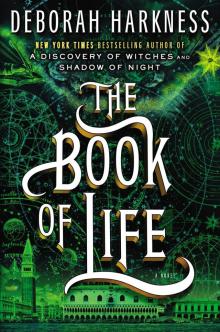 The Book of Life
The Book of Life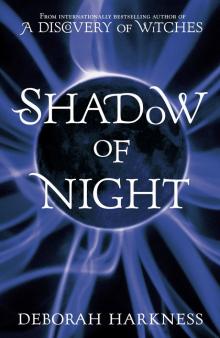 Shadow of Night
Shadow of Night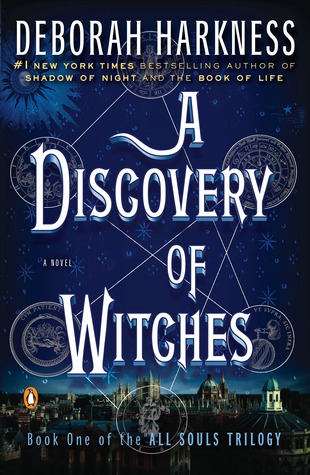 A Discovery of Witches
A Discovery of Witches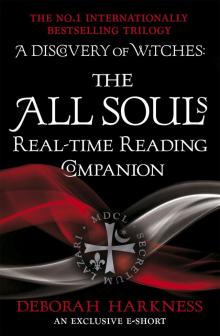 The All Souls Real-Time Reading Companion
The All Souls Real-Time Reading Companion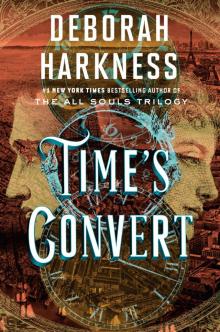 Time's Convert
Time's Convert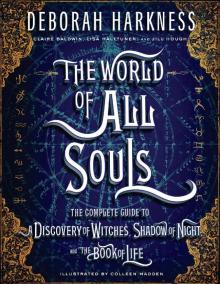 The World of All Souls
The World of All Souls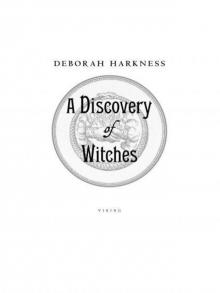 A Discovery of Witches: A Novel (All Souls Trilogy)
A Discovery of Witches: A Novel (All Souls Trilogy) Shadow of Night: A Novel
Shadow of Night: A Novel